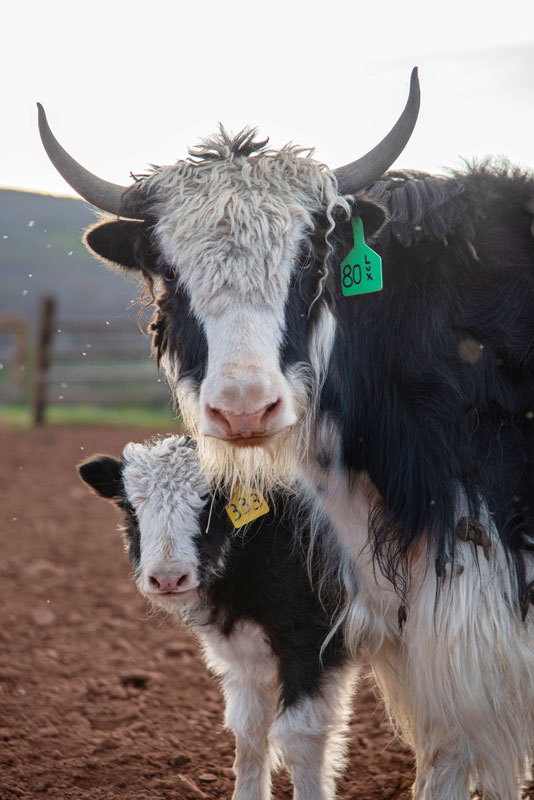On July 3, Latigo Ranch had a special delivery: nine glorious, shaggy yaks arrived, including four cows, two calves and three yearling heifers. And on the next day, July 4th, one last special delivery arrived—baby Liberty was born.
The newest member of the herd is a stunner, a tiny black-and-white baby who’s wooly coat will transform into the long, downy coat typical of her species. She looks a lot like her mom, except without all the horns... and hair. So. Much. Hair.

The domestic yak originated in the Tibetan plateau and the Himalayas, and the hardy bovines thrive in the Colorado high country. Think cows, but shorter, with impressive horns, quiet demeanors (no mooing, just grunts), and enormous skirts of long, layered hair. Because of their adaptation to mountain living, the animals are extremely cold hardy, and have larger hearts and lungs to cope with altitude.
Why yaks? The ranch added the herd for one solid reason: “Yaks are cool!” says owner Randy George.
Having the herd adds another dimension to the agritourism side of the guest ranch experience, he explains. “They help our guests understand from where their food and fiber comes. Having yaks is totally unique in the guest ranch space.”
Because cows? Sure, every ranch has cows; Latigo guests work those on horseback, a program the dude ranch is known for. Guests won’t be gathering the yaks, though, because they have horns (a danger to the horses). Plus, it makes for worked-up animals, and the George family wants their yak herd to stay calm when they handle them from the ground.

The guests instead have loved getting to know Liberty and the herd babies, who spend a lot of time frolicking and being generally adorable.
But the hairy herd won’t be pets. The George family added the yaks in hopes of getting a piece of an emerging industry that is becoming commercially viable. “I think that there are fewer being raised because of the need for a cool climate,” Randy explains. Not a problem at the ranch’s 9,000’ elevation. “They’re well-suited to our long winters. And the meat is tender, mild, and very tasty.”
Admittedly, there’s less of a market for the yak’s products at the moment, which include milk, meat and fiber. Each winter, the animals grow a fine inner coat of hair for insulation. In summer, they shed this undercoat out, which can be combed for different fiber products. The fiber, similar to cashmere, is prized because it’s a better insulator, hydrophobic, hypoallergenic and antimicrobial. “It’s great stuff,” says Randy. “Yaks are a niche industry. But then, so is dude ranching.”